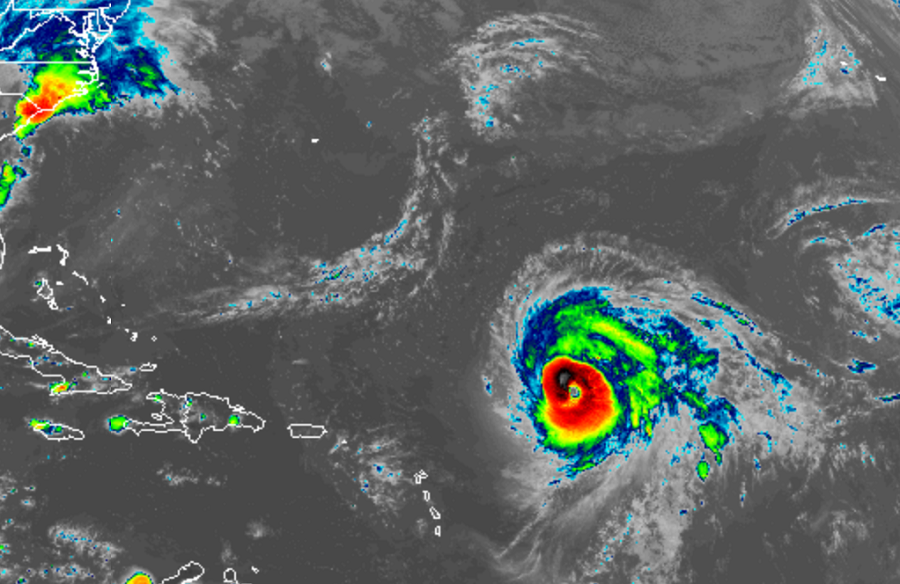
Hurricane Teddy has strengthened to category 4 status on the Saffir-Simpson wind scale, making it the second category 4 hurricane of the extremely active 2020 Atlantic hurricane season to date. The large and powerful storm appears to be heading towards Bermuda which was just hit by Hurricane Paulette days ago. In addition to impacting Bermuda, large swells from Teddy will spread across much of the western Atlantic, increasing the rip current threat across much of the U.S. East Coast.
In the latest advisory from the National Hurricane Center, Major Hurricane Teddy was located at 20.1N, 54.1W which is roughly 575 miles northeast of the Lesser Antilles and about 1,070 miles southeast of Bermuda. With the minimum central pressure down to 945 mb or 27.91 inches, maximum sustained winds have increased to 140 mph. Teddy is moving to the northwest at 13 mph.
According to the National Hurricane Center, additional strengthening is expected tonight, and some fluctuations in intensity are possible Friday and Saturday. A weakening trend is expected to begin late this weekend. Teddy is expected to approach Bermuda as a hurricane this weekend and make its closest approach to the island late Sunday or Monday. The National Hurricane Center says, “While the exact details of Teddy’s track and intensity near the island are not yet known, the risk of strong winds, storm surge, and heavy rainfall on Bermuda is increasing.”
Beyond Bermuda, it is too soon to say with certainty where Teddy will head next. While there’s low risk to the northeastern U.S. now, there is some risk to eastern Canada. The forecast track beyond Teddy’s potential interaction with Bermuda will become more clear beyond this weekend.
Even if Teddy doesn’t approach the east coast of North America, large swells eventually will. Large swells generated by Teddy are reaching the Lesser Antilles and the northeastern coast of South America today and should spread westward to the Greater Antilles, the Bahamas, Bermuda, and the east coast of the United States by the weekend. These swells are likely to cause life-threatening surf and rip current conditions. Even expert swimmers and surfers should avoid the ocean until calmer conditions return.
Teddy’s arrival in the 2020 Atlantic Hurricane Season is another sign of just how busy it is. The most recent Atlantic season with 2+ Category 4 or greater hurricanes by todays’ date was 2017 when Harvey, Irma, Jose, and Maria spun about in the basin.
Meteorologists believe another system will take shape in the Gulf of Mexico soon.
The 2020 Atlantic Hurricane season doesn’t end until the end of November.